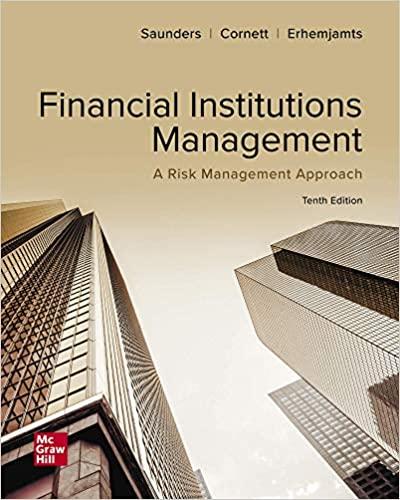Answered step by step
Verified Expert Solution
Question
1 Approved Answer
Koenig's management team believed the interest rate penalty associated with the purchase option was punitive and had asked Nichols to negotiate with Hasperat for the
Koenig's management team believed the interest rate penalty associated with the purchase option was punitive and had asked Nichols to negotiate with Hasperat for the removal of the purchase option. Nichols knew that the Kelley Building was not currently worth $ million, so at first glance he believed that Hasperat would be completely uninterested in the purchase option. Perhaps Koenig could offer Hasperat a nominal payment to compensate it for the time in reading and accepting a new lease contract. Before approaching Hasperat with such an offer, however, Nichols wanted to quantify his intuition by being more precise in determining how much the option to purchase the Kelley Building was worth to Hasperat.
Within a couple of hours, Nichols was able to make a list of all the necessary inputs Exhibit to develop a pro forma for the Kelley Building Exhibit He decided to extend the cash flow model beyond the standard ten years so that he could take into account all of the cash flows that Hasperat had committed to pay. Based on Koenig's internal data Exhibit he saw that Koenig's Cleveland office buildings had historically generated a annual return on average. He therefore used a discount rate on the Kelley Building's property before tax cash flow and estimated the building's current value at just under $ million. This implied a cap rate based on net operating income of approximately Comparable cap rates were hard to come by but Nichols was comfortable that the estimated value was approximately $ per square foot, which was not out of line with the limited amount of recent sales data on office properties in the Cleveland area Exhibit
Of course, this calculation reflected the value of the Kelley Building at the end of but the first purchase option was for the end of It was easy to forecast the price of the building at yearend by taking the present value of cash flows beginning in and discounting them back to the end of A similar strategy would allow estimation of the building's value at all remaining option exercise dates. Using the same pro forma, Nichols quickly determined that the implied building price would not rise at a sufficient rate to exceed the option strike price at any point during the remaining sixteen years on the lease. For example, Nichols calculated the present discounted value of the building's expected cash flows starting in to estimate its value at the second option exercise date of December He estimated the building would grow in value to nearly $ million, yet the price at which Hasperat could buy the building would grow to $ million by then $ million times times inflation
At this point, Nichols paused, thinking back to his real estate finance class, where his professor had always cautioned, Skilled financial analysts can make a spreadsheet to justify anything, so think carefully about your assumptions. To be more comfortable with his valuation, he tested how robust it was to variation in his key assumptions Exhibit As a result, he became increasingly convinced that the building was certainly not worth $ million. However, he allowed himself to consider the most aggressive assumptions, which according to his analysis implied a valuation as high as $ He therefore concluded that the option to purchase the building next year for $ million was worth today at most $ $ $but likely worth a lot less.
QuestGiven his calculations, Nichols thought that Koenig might start by offering Hasperat $ as a token to accept an amended lease. Because the purchase option had never been of interest to Hasperat, an offer of a nominal amount in exchange for signing a new lease without the purchase option seemed likely to be accepted. He summarized his notes and prepared to present his recommendation to his superiors Exhibit Question: Provide a thorough critique of Nichols's valuation method. Nichols used a DCF applying a discount rate to a future cash flow. Your critique should include a discussion of what is wrong with his assumptions as well as his technique.
Step by Step Solution
There are 3 Steps involved in it
Step: 1

Get Instant Access to Expert-Tailored Solutions
See step-by-step solutions with expert insights and AI powered tools for academic success
Step: 2

Step: 3

Ace Your Homework with AI
Get the answers you need in no time with our AI-driven, step-by-step assistance
Get Started


